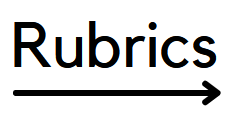What are General Education Institutional Rubrics SSC?

- General education outcomes assessments demonstrate how SSC students are performing on important, institutional skills throughout the General Education class requirements for associates degree programs.
- General education outcomes assessment is one of the stated Goals for the college and it is required by the Higher Learning Commission (HLC) for accreditation.
- General Education Institutional Rubrics are pre-designed and ready for instructors to use in D2L. Instructors just have to attach the D2L Rubric to an assignment and then grade an assignment based on that rubric.
- Here is a list of the current General Education Institutional Rubrics in D2L:
- SSC Oral Communication Skills Rubric
- SSC Problem-Solving Skills Rubric (Assessment of Effective Use of Critical Thinking Skills)
- SSC Technology Skills (Assessment of the use of Technology)
- SSC Written Communication Skills Rubric
- Coming Soon! SSC Multiculturalism Rubric
- Here is a list of the current General Education Institutional Rubrics in D2L:
What are Course Level Rubrics SSC?
- Course level rubrics are usually created by the instructor in D2L (unless they’d like to adapt a general education rubric above). The instructor then attaches their D2L rubric to an assignment and grades the assignment based on that rubric.
- Course level assessments begin with Student Learning Outcomes listed on the syllabus of each course and those outcomes are then aligned to a rubric for a particular course assignment.
How to implement in your D2L course:
General Education Institutional Rubrics (Created by Outcomes Assessment Committee)
| Attach a General Education Rubric to an Assignment | Handout | Watch Recording (02:16) |
| Insights Reports – View Institutional Rubric Data Collected in D2L | Handout | Watch Recording (03:17) |
Course Level Rubrics (Created by the Instructor)
| Create Your Own Rubric in D2L | Handout | Watch Recording (02:58) |
| Within a Course – View Course Level Rubric Statistics | Handout | Watch Recording (02:16) |
| Within Insight Reports – View Course Level Rubric Statistics | Handout | Watch Recording (03:17) |
| Share a Rubric with a Colleague or Copy to Another D2L Course | Handout | Watch Recording (02:10) |
Benefits of Using Rubrics
| Benefits of Using Rubrics | Handout | Watch Recording (01:51) |
Grading an Assignment that Uses a Rubric
| Grade a D2L Assignment that Uses a Rubric | Handout | Watch Recording (02:50) |
| What Happens after the Instructor Grades an Assignment? | Handout | Watch Recording (01:04) |
How Students View Rubrics (Before and After Assignment Submission)
| See How Students View Rubrics | Handout | Watch Recording (01:00) |
Alternative Methods of Using Rubrics
| Using Two Rubrics on One Assignment | Handout | Watch Recording (01:43) |
| Attaching a Rubric to an Observe in Person Assignment or Stand Alone Gradebook Column | Handout | Watch Recording (03:52) |
Teaching and Learning Center Training Session
| TLC Training Session on Rubrics at SSC | Handout | Watch Recording (30:53) |
| Attend a Live D2L Rubrics Training Session | Visit the TLC Training Calendar |
Need further help?
- Request one-on-one virtual training by emailing: ssconline@ssc.edu.
- Email a question to the Outcome Assessment Committee at: outcomecommittee@ssc.edu.
More Resources from the Outcome Assessment Committee:
